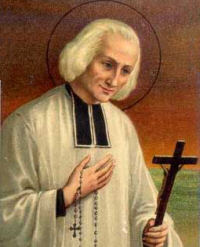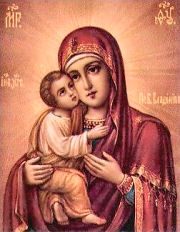Why St. Dominic wept.
ST DOMINIC
Priest (1170-1221) |
Published on 22 Nov 2012
In 2006 Father Peter Girard gave three presentations at our convention. Here is the second of them entitled "Why St Dominic Wept".
Fr. Peter M. Girard, OP, STD was ordained to the holy priesthood in 1992. He holds a Masters Degree in Communications (M.A.) from American University and the Masters of Divinity (M.Div.) and License in Sacred Theology (S.T.L.) from the Pontifical Faculty of the Immaculate Conception, Washington, DC. He received his Doctorate in Sacred Theology (S.T.D.) from the Pontifical University of St. Thomas (Angelicum) in Rome in 2001.
Fr. Peter has served as theological advisor to Virgil Dechant, the former Supreme Knight of the Knights of Columbus, as Dean of Men and Director of Homiletics at Holy Apostles Seminary in Cromwell, CT and Vice-Rector at the Pontifical College Josephinum in Columbus, OH. He is the author of over 60 articles in Homiletic & Pastoral Review and other publications, as well as A Textual Study and History of the Inscription of the Paschal Candle, his first book published by The Edwin Mellen Press of New York in 2004.
Fr. Peter has given numerous retreats and missions throughout the United States and around the world. He is currently Chaplain to the Dominican Cloistered Nuns in West Springfield, MA and Professor of Homiletics at Holy Apostles Seminary. He recently began a Got Forgiveness? campaign to bring priests and laity back to Confession which has born much good fruit. A priest with experience in international diplomacy, Fr. Peter is often called upon to speak on topics of significance for the Church and the world.
Fr. Peter M. Girard, OP, STD was ordained to the holy priesthood in 1992. He holds a Masters Degree in Communications (M.A.) from American University and the Masters of Divinity (M.Div.) and License in Sacred Theology (S.T.L.) from the Pontifical Faculty of the Immaculate Conception, Washington, DC. He received his Doctorate in Sacred Theology (S.T.D.) from the Pontifical University of St. Thomas (Angelicum) in Rome in 2001.
Fr. Peter has served as theological advisor to Virgil Dechant, the former Supreme Knight of the Knights of Columbus, as Dean of Men and Director of Homiletics at Holy Apostles Seminary in Cromwell, CT and Vice-Rector at the Pontifical College Josephinum in Columbus, OH. He is the author of over 60 articles in Homiletic & Pastoral Review and other publications, as well as A Textual Study and History of the Inscription of the Paschal Candle, his first book published by The Edwin Mellen Press of New York in 2004.
Fr. Peter has given numerous retreats and missions throughout the United States and around the world. He is currently Chaplain to the Dominican Cloistered Nuns in West Springfield, MA and Professor of Homiletics at Holy Apostles Seminary. He recently began a Got Forgiveness? campaign to bring priests and laity back to Confession which has born much good fruit. A priest with experience in international diplomacy, Fr. Peter is often called upon to speak on topics of significance for the Church and the world.








;.jpg)

 August is often considered the transitional month in our seasonal calendar. It is the time of the year we begin to wind-down from our summer travels and vacations and prepare for Autumn — back to school, fall festivals, harvest time, etc. The Church in her holy wisdom has provided a cycle of events in its liturgical year which allow the faithful to celebrate the major feasts in the life of Christ and Mary. Most notably, during August, we celebrate the feast of the Transfiguration (August 6) and the feast of the Assumption (August 15).
August is often considered the transitional month in our seasonal calendar. It is the time of the year we begin to wind-down from our summer travels and vacations and prepare for Autumn — back to school, fall festivals, harvest time, etc. The Church in her holy wisdom has provided a cycle of events in its liturgical year which allow the faithful to celebrate the major feasts in the life of Christ and Mary. Most notably, during August, we celebrate the feast of the Transfiguration (August 6) and the feast of the Assumption (August 15).
